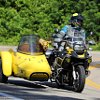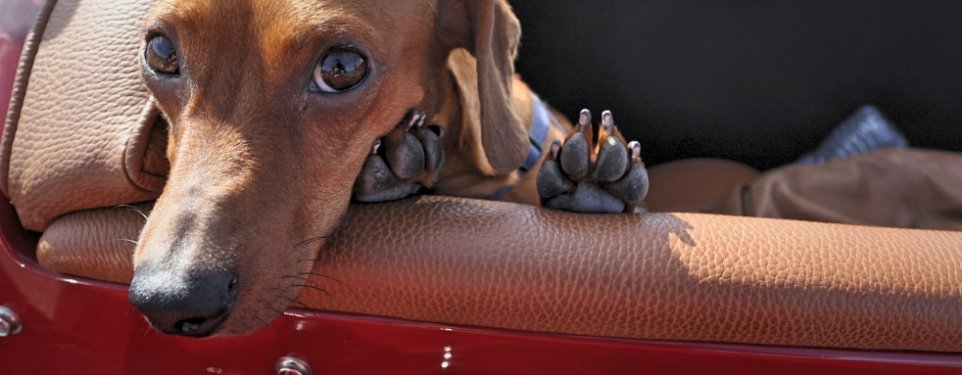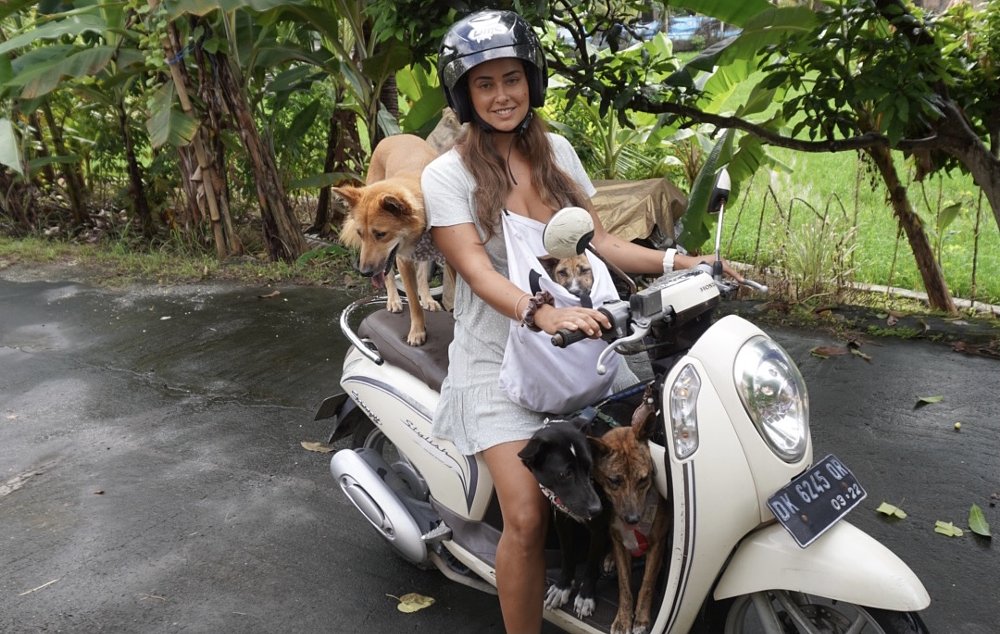There have been two great enthusiasms in my life — motorcycles and dogs. I've often wished I could combine the two, but I always end up leaving one at home while I go out and have fun with the other.
As it happens, there are riders who have solved that dilemma by training their dogs to go for short rides in sidecars. If you look, you can find lots of dogs in sidecars on social media. There was even a film made about dogs and sidecars, as the trailer below shows.
But only a few riders travel long distances with their canine pals, according to Peter Burke, who's been doing just that for more than two decades with a succession of golden retrievers.
As a fan of the breed — I'm currently sharing the couch with my fifth golden, Sophie — I've read Burke's ride reports on Adventure Rider and his own website, Travels With Barley, with more than casual interest. Burke and first "navigator," Barley, took their first sidecar trip together in 2010.
Burke started riding when was 14. "I went into the service when I was 18 and rode as much as I could, but the deployment schedule was pretty brutal," he says. After grad school and marriage, he got back into bikes in 1995 and has been riding ever since.
"I had a head injury in the service so I couldn't do long trips until my first sidecar dog," Burke says. "My right eye was damaged and I occasionally see double. It gets very disorienting, very nauseating, and my dog is my anchor until it clears. He'll drag me off to a safe spot and hunker down with me."
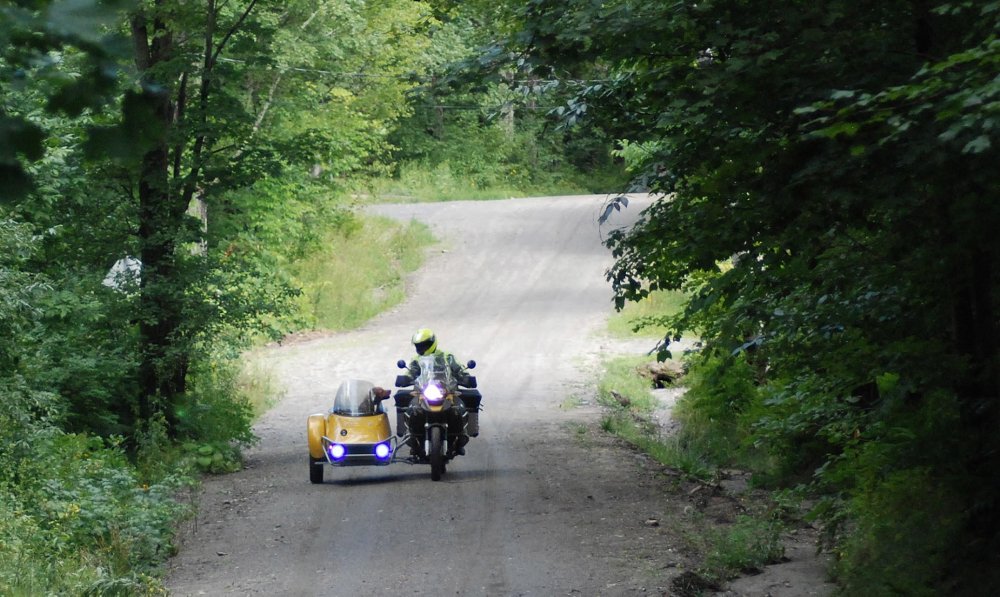
Barley kept life interesting on the road. "He was what they call a submissive nipper, so when he got excited he'd grab your clothing or anything that was dangling. He got excited when women talked to him in high squeaky voices, and when they'd come over to the sidecar and lean over he'd latch onto a breast and go Wooo! I kept a ball in a tank bag and if some woman wanted to say hi to Barley, I'd shove the ball in his mouth to put him on 'safe.'"
Traveling with a dog: SDF magnified
A dog in a sidecar makes it impossible not to interact with people you meet on the road.
"You can't be an introvert when you travel with a dog," Burke says. "There aren't many sidecars around, so when you meet another driver on the road and they look at it they say, 'Oh, that's a sidecar,' and just before you pass they recognize the dog with the goggles and they get a huge grin. It's like that everywhere you go."
There's also a phenomenon known as SDF — sidecar delay factor — that results when strangers wander over to talk to you about your rig.
"With a dog," Burke says, "SDF is magnified about a hundred times."
Burke lost Barley to cancer at age eight. By then, his next riding partner, Tulliver, was seven. But dogs age quickly, and Tulliver finally reached a point where his arthritis made getting in and out of the sidecar too difficult.
"We were getting ready to go to a rally in Iowa and he looked at me and said, 'No mas.'" That left the sidecar seat open for two-year-old Glenlivet.
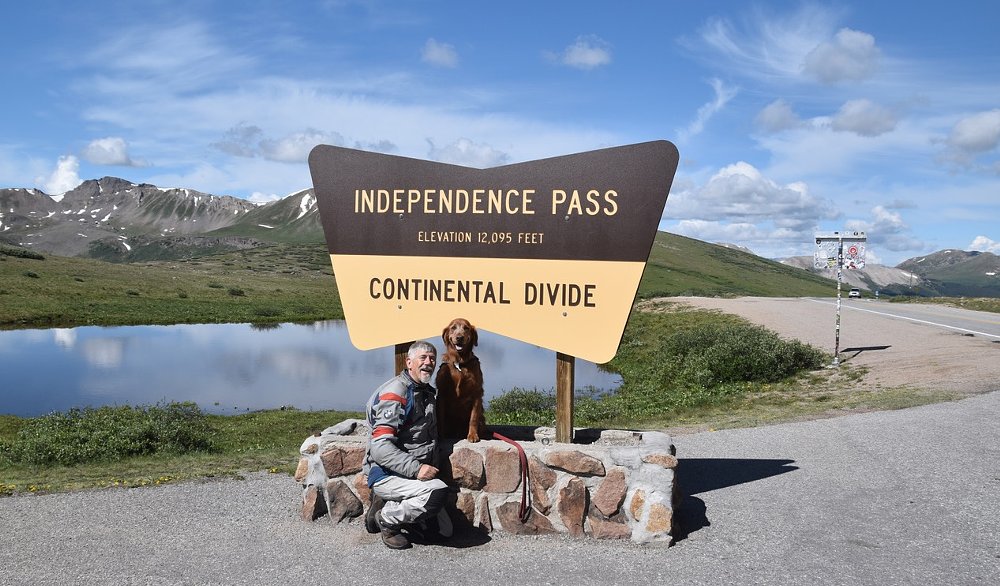
Tips on mixing dogs and sidecars
Not all dogs take naturally to sidecars, and neither do all riders. For anyone contemplating training a dog to ride in one, Burke says the first step is to test drive a sidecar.
"With the exception of Urals, every sidecar on the road today is a custom or semi-custom job that may or may not be set up right," he says. "Personally, I don't like Urals — I don't like being the slowest thing on the road — but riding one tells you how a properly set-up rig handles, steers, stops, and goes, so I say go to a Ural dealer for a test ride and see if you even like it."
The next step is getting the dog to enjoy being in the sidecar.
"I treat the sidecar like a crate," Burke says, the crate in question being a common place for dogs to sleep or travel in, made of plastic or wire mesh. Many dogs take to crates right away, seeing it as their happy place, like a den.
"Nothing bad can ever happen in the crate. It's not for punishment, it's for toys and treats and praise." Not only does this teach the dog the sidecar is a safe place, it makes it a literal refuge. "If we're far from home and the dog is startled, he'll run to the sidecar and not away," Burke says.
Barley was a natural from the start. "I opened up the sidecar, and he got in and sat down behind the windshield staring forward," Burke says. "I rolled it a few feet and he was fine with that. I started the engine, and he was fine with that, too. We did a hundred miles that first day."
Other dogs have to be eased into sidecar life.
"The first step is short rides in good weather on a route that lets you cut it short and head home right away if the situation demands it," Burke advises. "I describe my training method as Sesame Street — keep it short and intense with a lot of breaks."
Glenlivet started riding with Burke three years ago.
"He's taken to it well, but I wish he would stay behind the windscreen like Barley did. He has to have his head right next to my leg. I have a decibel meter app on my phone, and right next to the engine where the wind is screaming in his ears it's off the scale. He's always worn Rex Specs goggles, and they came out with a product called Ear Pro, like a neck gaiter with cups over the ears. It was a mixed bag. They worked great in cool weather, not so much in hot weather."
Day rides are one thing but long-distance travel with a dog presents special problems.
"If you're used to doing short trips around the house and there's bad weather, you simply don't go. But in Wyoming with a storm coming in, you have no choice, you're there."
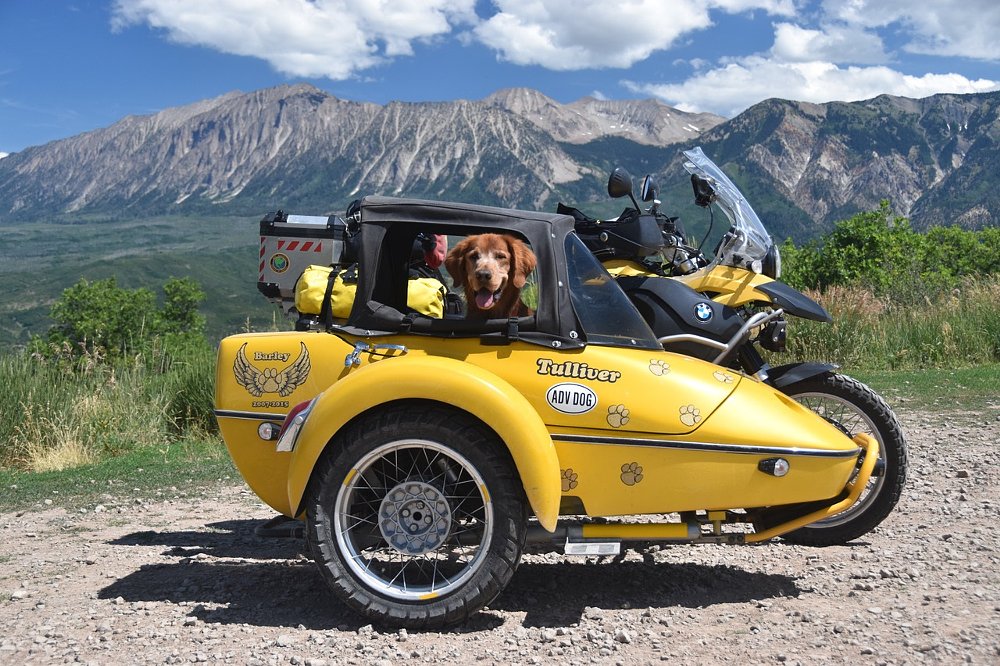
Burke modified his Hannigan sidecar by adding a tonneau cover, a folding ragtop, and a vent to funnel more air into the sidecar. He also took out the seat and replaced it with a memory-foam dog bed. For both his and the dog's comfort, he also got a bigger tent.
"I use a three-person tent because the dog would claw my back at night in his dreams," Burke says. "In a much larger tent, I can just push him away."
If it sounds like a lot of extra effort to take a dog on long trips in a sidecar, there are also unique compensations.
"My last two dogs, Glenlivet and Tulliver, are service dogs. They definitely help me with long-distance trips. If I was riding with my wife and I wanted a burger, she'd remind me of my dietary needs. And she screams if I take a turn too fast. The dog, on the other hand, has absolute faith in my riding abilities. If I take a wrong turn he looks at me as if to say, 'Ah, you meant to go this way, that's cool.' He never criticizes my dietary choices, and he listens to everything I tell him like it's the most profound thing he's ever heard."
Given her attitude toward machinery in general — she's convinced the vacuum cleaner is evil incarnate — it might be a long road getting my Sophie into a sidecar. But Peter Burke and his well traveled companions give me hope that someday she and I could go for a ride together, and that makes me so happy that if I had a tail I'd wag it.





